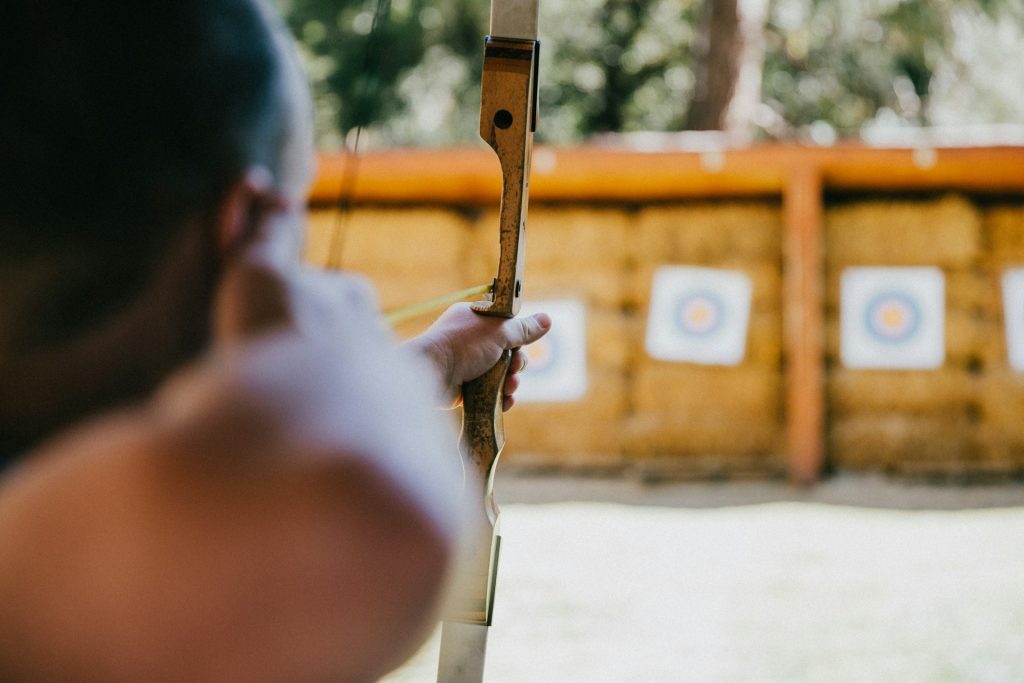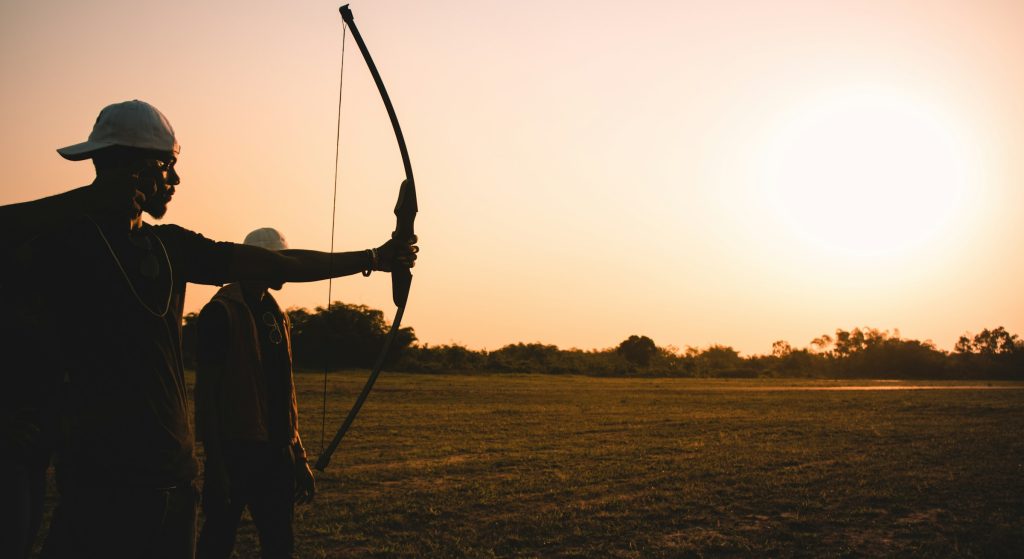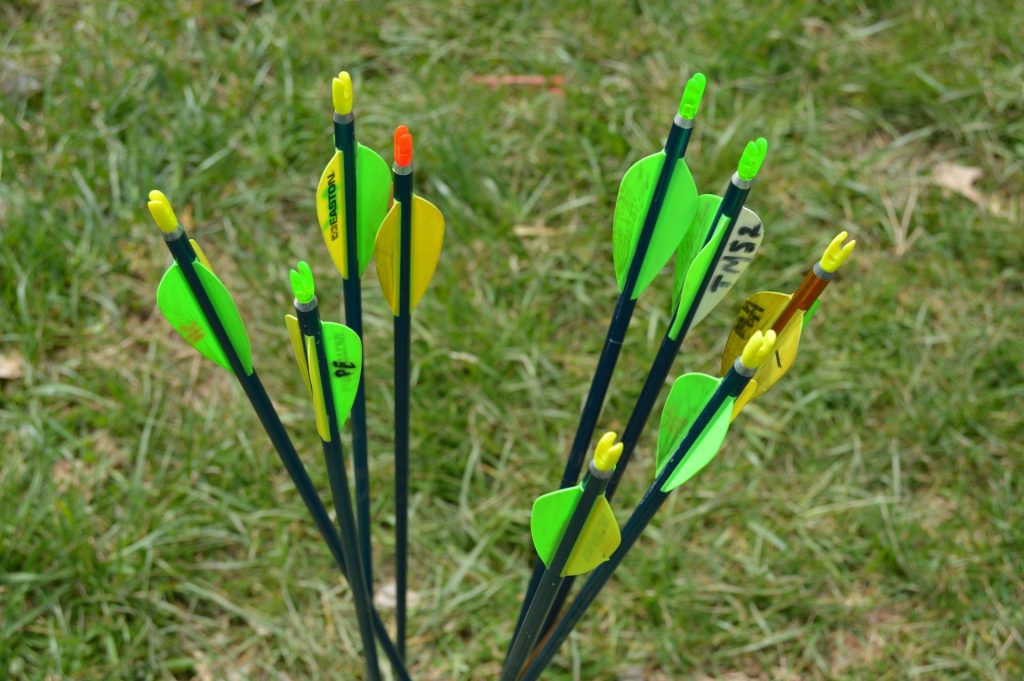When it comes to mastering your crossbow, one of the most crucial steps is learning how to sight in a crossbow scope. Whether you’re a seasoned hunter or a beginner eager to hit your target with precision, properly sighting your scope can significantly enhance your accuracy and overall shooting experience. In this guide, we’ll walk you through the essential steps and tips to ensure your crossbow scope is perfectly aligned, enabling you to make the most out of every shot.
Why Is Sighting in a Crossbow Scope Important?
Sighting in a crossbow scope is a crucial step for ensuring accurate and precise shooting. A properly sighted scope allows you to hit your intended target consistently, whether you’re hunting or participating in target shooting competitions. Without properly sighting in your crossbow scope, your shots may not land where you’re aiming, leading to missed opportunities or potential safety hazards.
There are several reasons why sighting in a crossbow scope is important:
Compensate for Manufacturing Variations: Even though crossbows and scopes are manufactured with precision, there can be slight variations in the way they are assembled or mounted. Sighting in your scope helps you account for these minor discrepancies and ensures that your scope is aligned correctly with your crossbow’s line of fire.
Adjust for Different Bolt Weights and Lengths: The weight and length of the bolts you use can affect the trajectory and impact point. By sighting in your scope with the specific bolts you plan to use, you can compensate for any variations in trajectory caused by different bolt configurations.
Account for Environmental Factors: Factors such as temperature, humidity, and altitude can influence the flight path of your bolts. Sighting in your scope in the conditions you typically shoot in will help you account for these environmental variables and make the necessary adjustments.
Maintain Accuracy Over Time: Over time, your crossbow and scope may shift slightly due to wear and tear or impacts during use. Regular sighting in ensures that your scope remains accurately aligned, maintaining the precision and consistency of your shots.
Increase Confidence and Consistency: When you know that your crossbow scope is properly sighted in, you can shoot with greater confidence and consistency. This not only improves your overall accuracy but also enhances your enjoyment and performance in hunting or target shooting situations.
By taking the time to carefully sight in your crossbow scope, you can maximize the accuracy and effectiveness of your crossbow, ensuring that you make the most of every shot.

What Equipment Do You Need for Sighting in a Crossbow Scope?
Crossbow: Of course, you’ll need your crossbow and the scope that you want to sight in. Make sure your crossbow is in good working condition and properly assembled.
Bolts: Have a sufficient supply of the specific bolts you plan to use with your crossbow. It’s recommended to use the same type and weight of bolts for sighting in as you’ll be using for hunting or target shooting.
Target: You’ll need a suitable target for sighting in your crossbow scope. A specialized archery target or a high-density foam target specifically designed for crossbows is ideal. These targets provide a clear visual indication of your bolt’s impact and won’t cause excessive damage to your bolts.
Shooting Sticks or Bipod: Sighting in your crossbow scope requires a stable shooting platform. Shooting sticks or a bipod can help you maintain a consistent shooting position and reduce the chances of human error during the sighting process.
Rangefinder: A rangefinder is a useful tool for accurately determining the distance to your target. This information is crucial for making precise adjustments to your scope’s windage and elevation settings.
Sight Adjustment Tools: Depending on your crossbow scope model, you may need specific tools, such as Allen wrenches or a scope adjustment tool, to make windage and elevation adjustments to your scope.
Eye Protection: Safety should always be a top priority when handling crossbows. Wear appropriate eye protection to protect your eyes from potential bolt fragments or debris.
Hearing Protection (optional): While not strictly necessary for sighting in, wearing hearing protection can help reduce the impact of the crossbow’s noise on your ears, especially if you’ll be taking multiple shots.
Shooting Mat or Ground Cover: A shooting mat or ground cover can help keep your equipment clean and organized while sighting in your crossbow scope.
Pen and Notepad: It’s a good idea to keep a pen and notepad handy to record your adjustments and observations during the sighting process. This information can be valuable for future reference or troubleshooting.
By having all the necessary equipment prepared and organized, you’ll be able to focus on the sighting process and make accurate adjustments to your crossbow scope.

How to Secure Your Crossbow for Sighting?
Choose a Stable Surface: Start by setting up your sighting station on a flat, level surface. This could be a shooting bench, a sturdy table, or even the ground, as long as it’s free from debris and provides a solid foundation.
Use a Shooting Rest or Bipod: To eliminate any potential human error or shakiness, it’s highly recommended to use a shooting rest or bipod. These devices cradle your crossbow, allowing you to maintain a consistent shooting position throughout the sighting process.
Secure the Crossbow: Once your crossbow is placed on the shooting rest or bipod, use the appropriate mounting mechanism to secure it firmly in place. Many shooting rests have adjustable cradles or clamps designed specifically for holding crossbows and other archery equipment.
Check for Proper Eye Relief: Adjust the position of your crossbow so that when you look through the scope, you have the correct eye relief. Eye relief is the distance between your eye and the scope’s ocular lens that provides a full field of view. Consult your scope’s manufacturer specifications for the recommended eye relief distance.
Ensure Proper Cheek Weld: While maintaining the correct eye relief, position your head and cheek in a comfortable and consistent position on the crossbow’s stock. This cheek weld should be repeatable for every shot during the sighting process.
Tighten All Connections: Double-check that all connections, clamps, and adjustments on your shooting rest or bipod are tightened securely. This will prevent any potential shifting or movement during the sighting process.
Check for Obstructions: Ensure that there are no obstructions or objects in the path between your crossbow and the target. Clear the area of any potential hazards or distractions.
Consider Using a Remote Trigger: If available, consider using a remote trigger or firing mechanism to further minimize any potential movement or disturbance when taking shots during the sighting process.
What Is the Proper Shooting Distance for Sighting in a Crossbow Scope?
The shooting distance you choose for sighting in your crossbow scope is crucial for ensuring accurate and consistent results. There are a few factors to consider when determining the appropriate distance:
Manufacturer Recommendations: Always start by consulting your crossbow and scope manufacturer’s recommendations. Many manufacturers provide specific guidelines on the ideal sighting distance for their products, which can range from 20 yards to 50 yards or more.
Intended Use: The shooting distance should also be based on the intended use of your crossbow. For hunting purposes, it’s generally recommended to sight in at distances between 20 and 40 yards, as most hunting shots occur within this range. For target shooting or competitive purposes, you may need to sight in at longer distances, such as 50 or 60 yards.
Bolt Trajectory: The trajectory of your crossbow bolts can vary depending on the bolt weight, velocity, and other factors. Sighting in at longer distances can help you account for the bolt’s arc and ensure that your point of aim and point of impact align at various ranges.
Shooting Conditions: Consider the typical shooting conditions you’ll encounter when using your crossbow. If you’ll be shooting in dense brush or wooded areas, sighting in at shorter distances (20-30 yards) may be more practical. If you anticipate taking longer shots in open fields or plains, sighting in at 40 yards or more may be necessary.
Personal Preference and Skill Level: Your personal preference and skill level can also play a role in determining the sighting distance. If you’re an experienced shooter with a keen eye for longer ranges, you may opt to sight in at greater distances. If you’re a beginner or prefer shorter, more manageable distances, sighting in at 20-30 yards may be more suitable.
Once you’ve considered these factors, it’s generally recommended to start sighting in at a shorter distance (20-25 yards) to get your scope on target. Then, gradually increase the distance in increments (e.g., 30 yards, 40 yards, etc.), making the necessary adjustments until you’ve achieved a consistent point of aim and point of impact at your desired shooting distance.

How Do You Adjust the Windage and Elevation on a Crossbow Scope?
Adjusting the windage (horizontal) and elevation (vertical) settings on your crossbow scope is a crucial step in the sighting process. These adjustments allow you to align the point of impact with your point of aim, ensuring accurate and precise shooting. Follow these steps to make the necessary adjustments:
Understand the Adjustment Mechanisms: First, familiarize yourself with the adjustment mechanisms on your specific crossbow scope. Most scopes feature turrets or dials for windage and elevation adjustments, while some may have small screws or knobs instead. Consult your scope’s manual to identify the correct adjustment components.
Determine the Direction of Adjustment: Once you’ve taken a few shots and analyzed the point of impact on your target, you’ll need to determine the direction of adjustment required. If your shots are hitting to the left of the intended point of aim, you’ll need to adjust the windage to the right. If they’re hitting low, you’ll need to increase the elevation.
Make Windage Adjustments: To adjust the windage, locate the windage turret or knob on your scope. Many turrets feature audible or tactile clicks, with each click representing a specific adjustment increment (e.g., 1/4 inch or 1 MOA at a specific distance). Turn the windage turret in the direction you want the point of impact to move. For example, turn it clockwise to move the point of impact to the right.
Adjust the Elevation: For elevation adjustments, locate the elevation turret or knob on your scope. Like the windage turret, elevation turrets often have audible or tactile clicks representing specific adjustment increments. Turn the elevation turret in the direction you want the point of impact to move. Turning it counterclockwise will typically raise the point of impact, while turning it clockwise will lower it.
Record Your Adjustments: As you make adjustments, keep a record of the number of clicks or increments you’ve turned the windage and elevation turrets. This information will help you track your progress and make future adjustments more efficiently.
Take Confirmation Shots: After making your adjustments, take a few more shots and analyze the new point of impact. Repeat the adjustment process as necessary until your point of aim and point of impact align consistently.
Secure the Turrets: Once you’ve achieved the desired sight picture, many scopes feature turret caps or locking mechanisms to secure the windage and elevation settings in place, preventing accidental adjustments.
How Many Shots Should You Take to Confirm Your Sight Picture?
Confirming your sight picture is a crucial step in the sighting process, and it’s important to take enough shots to ensure consistency and accuracy. The number of shots you should take can vary depending on several factors, but a general guideline is as follows:
Initial Sighting: When you’re first sighting in your crossbow scope, it’s recommended to take at least three shots from a stable and consistent shooting position. This initial set of shots will give you an idea of where your point of impact is in relation to your point of aim.
Making Adjustments: After analyzing the initial group of shots, make the necessary windage and elevation adjustments to your scope. Once you’ve made the adjustments, take another group of three shots to evaluate the new point of impact.
Confirming Consistency: If the second group of shots is still not aligned with your point of aim, make further adjustments and take another group of three shots. Repeat this process until you’ve achieved a consistent and tight grouping of at least three shots at your desired point of aim.
Final Confirmation: Once you’ve achieved a consistent three-shot grouping, it’s a good idea to take an additional three to five shots to confirm that your sight picture is truly dialed in. This final set of shots should all impact within a small, tight grouping at your point of aim.
Distance Confirmation (Optional): If you plan to shoot at various distances, you may want to confirm your sight picture at different yardages as well. For example, if you’ve sighted in at 20 yards, you might want to take a few confirmation shots at 30 yards, 40 yards, and so on, making any necessary adjustments for each distance.
It’s important to note that taking too few shots can lead to inaccurate sighting, as a single stray shot may skew your perception of the true point of impact. By taking multiple groups of shots and confirming consistency, you can have greater confidence in your sight picture and ensure that your crossbow scope is properly sighted in.

What Are Some Common Mistakes to Avoid When Sighting in a Crossbow Scope?
Inconsistent Shooting Position: One of the most common mistakes is failing to maintain a consistent shooting position throughout the sighting process. Subtle changes in your stance, grip, or cheek weld can drastically impact your point of impact, leading to inaccurate sighting adjustments. Always use a stable shooting rest or bipod to eliminate human error and ensure a repeatable shooting position.
Improper Eye Relief: Failing to establish and maintain proper eye relief can result in a skewed or obstructed view through the scope, making it difficult to accurately align your point of aim. Consult your scope’s manufacturer specifications for the recommended eye relief distance and adjust your crossbow’s position accordingly.
Rushing the Process: Sighting in a crossbow scope requires patience and attention to detail. Rushing through the process by taking too few shots or making hasty adjustments can lead to inaccurate results. Take your time, follow a methodical approach, and ensure consistency with each shot before making adjustments.
Ignoring Environmental Factors: Environmental factors such as wind, temperature, and altitude can impact bolt trajectory and point of impact. Sighting in under different conditions than your typical shooting environment can lead to inaccuracies. Whenever possible, sight in under conditions that closely match your intended shooting scenarios.
Using Improper Targets: Using targets that are not designed for crossbow sighting can make it difficult to accurately assess your point of impact. Specialized archery or high-density foam targets are ideal, as they provide a clear visual indication of bolt strikes without excessive bolt damage.
Failing to Record Adjustments: Neglecting to keep track of the adjustments you make to your scope’s windage and elevation can lead to confusion and inconsistencies. Always record the number of clicks or increments you’ve adjusted, as this information will be valuable for future reference or troubleshooting.
Overlooking Scope Mounting: If your crossbow scope is not securely mounted or is experiencing any shifting or looseness, it can significantly impact your point of impact and sighting accuracy. Ensure that your scope is properly mounted and tightened according to the manufacturer’s instructions.
Neglecting Bolt Consistency: Using different types or weights of bolts during the sighting process can lead to inconsistent trajectories and inaccurate sighting adjustments. Always use the same type and weight of bolts that you intend to use for hunting or target shooting.
By being aware of these common mistakes and taking the necessary precautions, you can avoid potential pitfalls and ensure a smooth and accurate sighting process for your crossbow scope.
Enjoyed this guide of how to sight in a crossbow scope? Then be sure to check out our other scope reviews and guides.